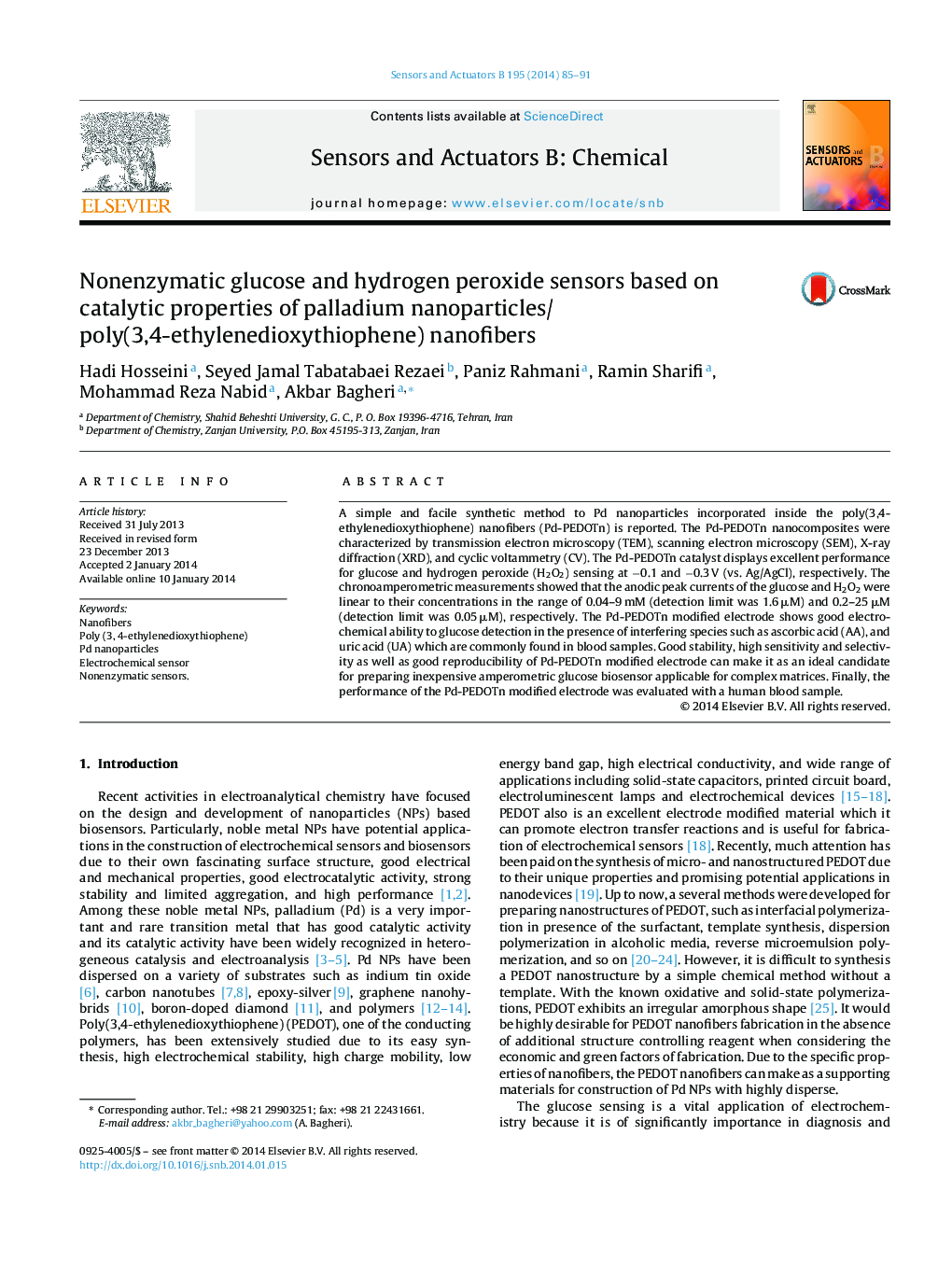| Article ID | Journal | Published Year | Pages | File Type |
|---|---|---|---|---|
| 7147076 | Sensors and Actuators B: Chemical | 2014 | 7 Pages |
Abstract
A simple and facile synthetic method to Pd nanoparticles incorporated inside the poly(3,4-ethylenedioxythiophene) nanofibers (Pd-PEDOTn) is reported. The Pd-PEDOTn nanocomposites were characterized by transmission electron microscopy (TEM), scanning electron microscopy (SEM), X-ray diffraction (XRD), and cyclic voltammetry (CV). The Pd-PEDOTn catalyst displays excellent performance for glucose and hydrogen peroxide (H2O2) sensing at â0.1 and â0.3 V (vs. Ag/AgCl), respectively. The chronoamperometric measurements showed that the anodic peak currents of the glucose and H2O2 were linear to their concentrations in the range of 0.04-9 mM (detection limit was 1.6 μM) and 0.2-25 μM (detection limit was 0.05 μM), respectively. The Pd-PEDOTn modified electrode shows good electrochemical ability to glucose detection in the presence of interfering species such as ascorbic acid (AA), and uric acid (UA) which are commonly found in blood samples. Good stability, high sensitivity and selectivity as well as good reproducibility of Pd-PEDOTn modified electrode can make it as an ideal candidate for preparing inexpensive amperometric glucose biosensor applicable for complex matrices. Finally, the performance of the Pd-PEDOTn modified electrode was evaluated with a human blood sample.
Related Topics
Physical Sciences and Engineering
Chemistry
Analytical Chemistry
Authors
Hadi Hosseini, Seyed Jamal Tabatabaei Rezaei, Paniz Rahmani, Ramin Sharifi, Mohammad Reza Nabid, Akbar Bagheri,
